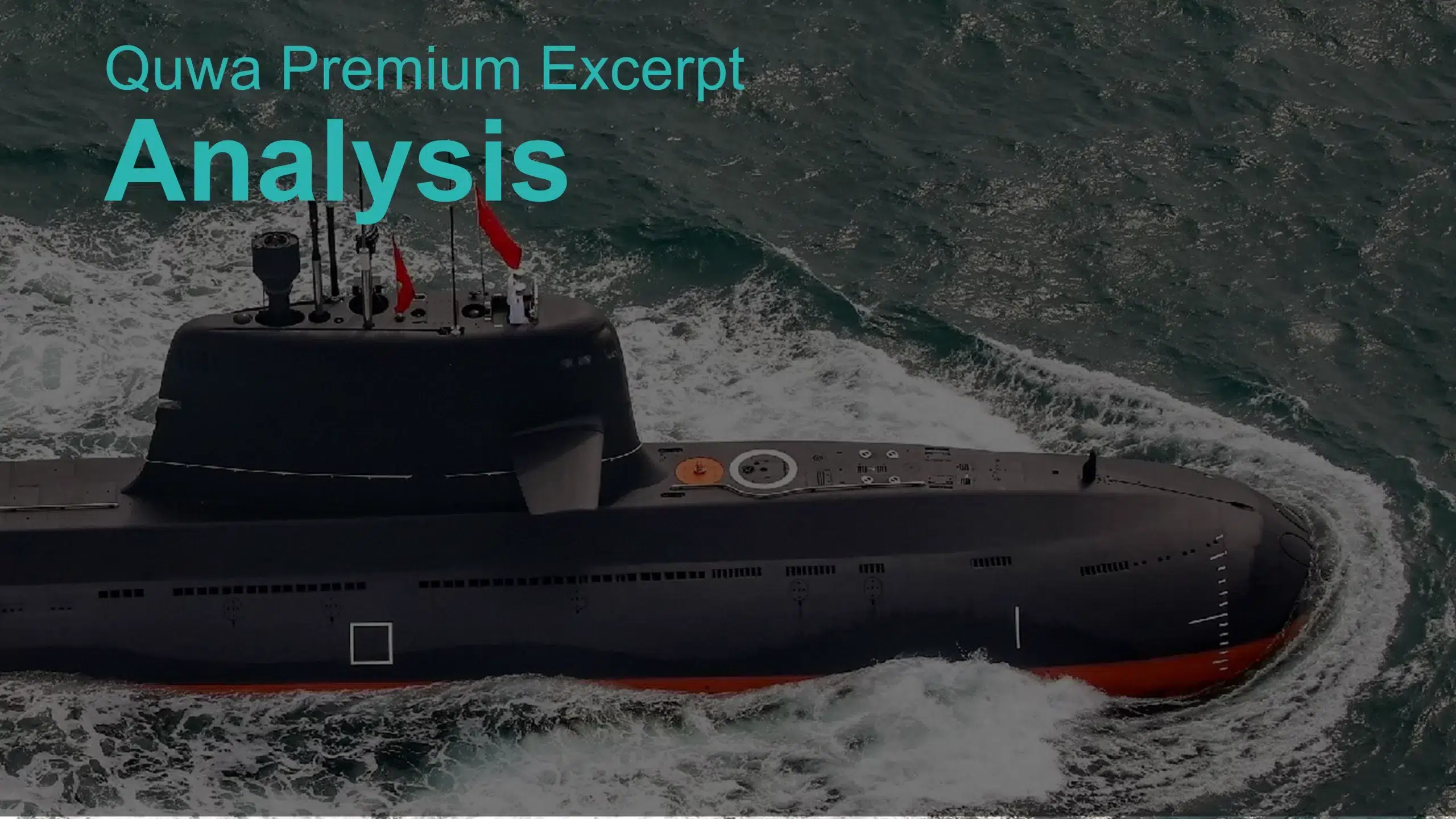6716Views

Analysis: Pakistan Navy Hangor Submarine Program
In April 2015, Pakistan’s Ministry of Defence Production (MoDP) approved the purchase of eight air-independent propulsion (AIP)-equipped submarines (SSP) from China. Under the contract, Pakistan would manufacture four of the boats at Karachi Shipyards and Engineering Works (KSEW), while the rest will be produced by China Shipbuilding Industry Corporation (CSIC).
Christened as the Hangor program (in honour of the original Hangor-class diesel electric submarine in service from 1967 to 2006), the first four boats were to be delivered by 2023, with the last four (from KSEW) due by 2028. However, the Pakistan Navy (PN) has not yet received the first of these boats, confirming a clear delay in the program, likely due to a combination of supplier-side issues and fiscal challenges with China and Pakistan, respectively.
Nevertheless, the Hangor program is progressing and based on current projections, will factor into the PN’s fleet by the late 2020s and early 2030s. Upon completion, the program will expand the PN’s sub-surface fleet to 11 AIP-equipped boats, joining the PN’s three upgraded Khalid-class (i.e., Agosta 90B) submarines. The PN is also seeking an unspecified number of shallow-water attack submarines (SWATS), potentially giving Pakistan one of the largest sub-surface fleets in Asia.
Hangor Submarine Design and Capabilities
The Hangor submarine is a variant of the China Shipbuilding & Offshore International Co. Ltd (CSOC) S26, a design based on the Yuan-class submarine, but developed for the export market. However, in comparison to the standard-grade S26, the Hangor carried several design changes, notably a heavier displacement (2,800 tons to the S26’s 2,550 tons) and slightly shorter hull (76 m to the S26’s 77.7 m). Otherwise, the Hangor was largely the same as the S26, especially in terms of its payload capacity of six torpedo tubes and Stirling-based AIP system.
Initially, the S26-series was apparently marketed with the German MTU 12V 396 SE84 diesel engine, but the German government withheld export licenses for the powerplant. Consequently, the PN had to pivot and procure the Chinese CHD-620 diesel engine in place of the MTU systems, hence causing a delay in the program. However, it is unclear if the entirety of the delays were due to the engine swap or, as plausibly, if Pakistan’s ongoing fiscal difficulties are also contributing to the friction.
It is not known if the Hangor submarine is using Chinese or – like the PN’s upgraded Agosta 90Bs – a mix of domestic, Turkish, and Western subsystems. Either scenario is plausible. For example, the PN may find that going all-in with a ‘stock’ Chinese configuration is easier to integrate, less costly to buy, and less prone to further delays. Alternatively, designing a subsystem build similar to the Agosta 90B could allow for greater standardization across the submarine fleet, which can streamline training.
However, it should be noted that the PN is localizing subsystems for both its surface and sub-surface systems. According to Global Industrial and Defence Solutions’ (GIDS) product roadmap, Pakistan is developing an automated deployment and retrieval system (ADRS) and electronic support measures (ESM) system for submarines. Thus, one can expect the PN to configure these systems to the Hangor-class and, potentially, the new shallow-water attack submarine (SWATS)…
End of excerpt. Subscribe to Quwa Premium to read the rest of this section.
Potential Deployment Plans
In some ways, the PN’s decision to acquire the Hangor was intriguing, not because it purchased the boats from China, but the specific design itself. Being a derivative of the Type 039A/B Yuan-class, the Hangor/S26 is a large submarine; in fact, it would be the largest submarine the PN will have operated up to this point (the Agosta 90B or Khalid-class has a displacement of 2,083 tons when submerged). If the PN was solely focused on coastal or shallow-water anti-area and access denial (A2/AD), then the Hangor-class submarine could have numerous drawbacks due to its size.
Hence, one can conclude that the PN did not acquire the Hangor for shallow-water A2/AD, but open-ocean operations. In fact, analysts, such as those from the U.S. Naval Institute (USNI), assessed that the Type 039A/B was “an open-ocean submarine designed to meet the needs of the PLAN’s [People’s Liberation Army Navy] near-seas active defense aspect of their maritime strategy, and not primarily a boat to operate in Taiwan’s coastal waters.” Thus, the larger submarine design likely translates into greater range/endurance and, possibly, payload capacity.
In this sense, the PN could be planning to use the Hangors to primarily patrol its sea lanes/sea-lines-of-communication (SLOC)….
End of excerpt. Subscribe to Quwa Premium to read the rest of this section.
Delivery Status
The first four Hangor boats were due to delivery in 2023, but as they have not arrived, the program is evidently undergoing delays. However, with KSEW now manufacturing two of its four assigned boats, the Hangor program is progressing, albeit at a slower pace. KSEW cut the steel for its first boat (i.e., the fifth submarine) in 2021 and the second boat (i.e., sixth submarine) in 2022…
End of Excerpt (771/1,410 words)


